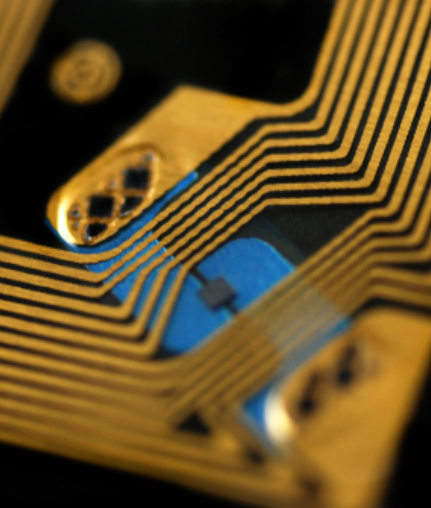A Beginner’s Guide to RFID

A Beginner’s Guide to RFID
Do you know what RFID stands for? Do you know what it means, and have you used the technology before? The answer many people give to this question is negative, and they are often emphatic about it. It will interest you to know that RFID is a lot more common than you think. In fact, you just might have an RFID tag or label close by as you read this guide. Read on to understand what RFID is all about and how it works in modern applications.
What is RFID?
RFID is basically an acronym that represents “radio-frequency identification.” This technology is simply digital data encoded in an RFID label or tag. The data in such a tag can then be captured by a device (reader) via radio waves. Similar to barcoding, the data an RFID tag contains can be captured by a special reader that stores the information in a database. However, RFID has a notable advantage over barcode systems as an asset tracking software. For instance, radio-frequency identification data can be read without a line of sight, but barcodes, on the other hand, can only be read with an optical scanner.
How Does Radio-Frequency Identification Technology work?
RFID is a part of technology grouping called Automatic Identification and Data Capture (AIDC). AIDC technology works in a specific kind of way in identifying objects, data collection, and data entry into computer systems with or without human intervention. In a similar vein, RFID uses radio waves to carry out the above functions. On a basic level, the technology comprises of three structural components which are
- An RFID Label
- An RFID Reader
- An Antenna and integrated Circuit for data transmission to the Card Reader
When active, the Reader converts the waves into a usable data form. The information collated from the RFID tag is transferred through a communication medium or interface to a host computing device. When the computer receives the data, it automatically stores it in a database for future analysis.
The nitty-gritty of Smart RFID tags or labels
As can be seen from the previous paragraph, RFID tags have integrated circuits and a transmission antenna. These tags also contain protective materials that shield them from hazardous external conditions. The protective material a tag will contain varies depending on what it is used for. For example, ID cards worn by the staff of organizations have protective materials made of plastic with the tag embedded in between two or more plastic layers. Another thing you should also know is that RFID labels may either be Passive tags or Active tags.
Passive Tags: Passive tags are the most common today. To function, they have to be powered up by an RFID reader.
Active Tags: Have a power supply board (battery) for data transmission at all times. They are active round the clock.
Is there a difference between Smart Labels and RFID tags?
Yes, there are slightly different from RFID tags. Why so? Smart Labels have essential structural elements that make them both barcodes and RFID at the same time. Smart Labels contain adhesives embedded with a tag inlay, and depending on the specific purpose and design, they may also have a barcode or other information. Despite the relative ability of a Smart Label to function with radio-frequency waves if so designed, the most notable difference is stark. Smart Labels can be printed or encoded, but RFID tags, on the other hand, require more advanced technology.
Uses of RFID technology
RFID technology has been in use for over half a century now, and in recent times, the demand and use of this technology have continued to grow. This growth has been influenced by directives issued by the US Department of Defense as well as the Mega Chain store, Wal-Mart’s mandate to suppliers to make their products RFID traceable.
Inventory Management: Supermarkets, manufacturing plants, and large business use RFID technology to keep track of their inventory within and outside work sites. This helps managers account for each item and its location.
Asset Tracking: RFID Labels serve a similar purpose to inventory tracking. Businesses can identify with a high degree of certainty, the location of their assets.
Personnel Tracking: This technology makes personnel administration and management a lot easier, particularly if you are working with staff numbering hundreds and even thousands at the same time.
Access Restrictions: Areas where sensitive materials are stored need maximum security at all times. RFID tags can be used to prevent unauthorized individuals from gaining access to such locations without the need for security manning the entry point.
Badging: Staff can be identified using RFID enabled Identity cards. These cards may also be used by staff to access locations or information that non-staff or unauthorized individuals should not.
Supply Chain Management: For the effective movement of supplies from one point to another, RFID technology simplifies coordination.
Anti-Counterfeiting: We find this technology deployed in the Pharmaceutical industry where drug manufacturers use it to authenticate their products.
Some other uses of RFID technology include
- File Tracking
- Race Timing
- Textile and Laundry Tracking
- Logistics Tracking
- Tolling
- Animal Tracking
- Real-Time Location
- Tracking of Returnable Transit Item (RTI)
- Vehicle Tracking
- Marketing Campaigns